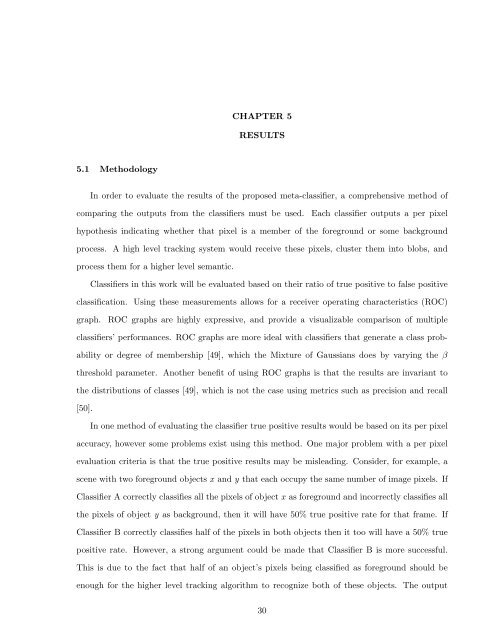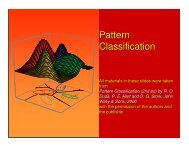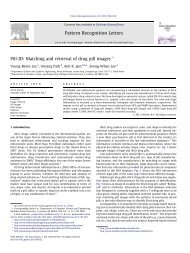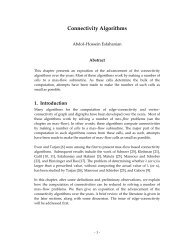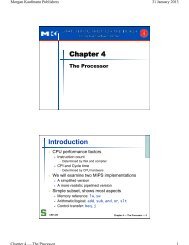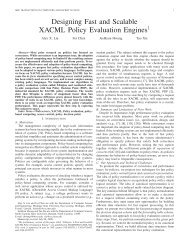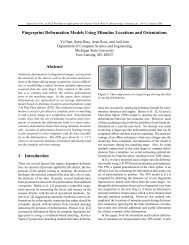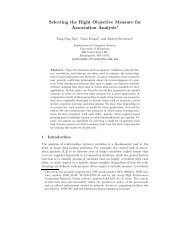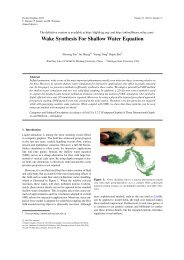Background Subtraction Using Ensembles of Classifiers with an ...
Background Subtraction Using Ensembles of Classifiers with an ...
Background Subtraction Using Ensembles of Classifiers with an ...
Create successful ePaper yourself
Turn your PDF publications into a flip-book with our unique Google optimized e-Paper software.
CHAPTER 5RESULTS5.1 MethodologyIn order to evaluate the results <strong>of</strong> the proposed meta-classifier, a comprehensive method <strong>of</strong>comparing the outputs from the classifiers must be used.Each classifier outputs a per pixelhypothesis indicating whether that pixel is a member <strong>of</strong> the foreground or some backgroundprocess. A high level tracking system would receive these pixels, cluster them into blobs, <strong>an</strong>dprocess them for a higher level sem<strong>an</strong>tic.<strong>Classifiers</strong> in this work will be evaluated based on their ratio <strong>of</strong> true positive to false positiveclassification. <strong>Using</strong> these measurements allows for a receiver operating characteristics (ROC)graph.ROC graphs are highly expressive, <strong>an</strong>d provide a visualizable comparison <strong>of</strong> multipleclassifiers’ perform<strong>an</strong>ces. ROC graphs are more ideal <strong>with</strong> classifiers that generate a class probabilityor degree <strong>of</strong> membership [49], which the Mixture <strong>of</strong> Gaussi<strong>an</strong>s does by varying the βthreshold parameter. Another benefit <strong>of</strong> using ROC graphs is that the results are invari<strong>an</strong>t tothe distributions <strong>of</strong> classes [49], which is not the case using metrics such as precision <strong>an</strong>d recall[50].In one method <strong>of</strong> evaluating the classifier true positive results would be based on its per pixelaccuracy, however some problems exist using this method. One major problem <strong>with</strong> a per pixelevaluation criteria is that the true positive results may be misleading. Consider, for example, ascene <strong>with</strong> two foreground objects x <strong>an</strong>d y that each occupy the same number <strong>of</strong> image pixels. IfClassifier A correctly classifies all the pixels <strong>of</strong> object x as foreground <strong>an</strong>d incorrectly classifies allthe pixels <strong>of</strong> object y as background, then it will have 50% true positive rate for that frame. IfClassifier B correctly classifies half <strong>of</strong> the pixels in both objects then it too will have a 50% truepositive rate. However, a strong argument could be made that Classifier B is more successful.This is due to the fact that half <strong>of</strong> <strong>an</strong> object’s pixels being classified as foreground should beenough for the higher level tracking algorithm to recognize both <strong>of</strong> these objects. The output30


